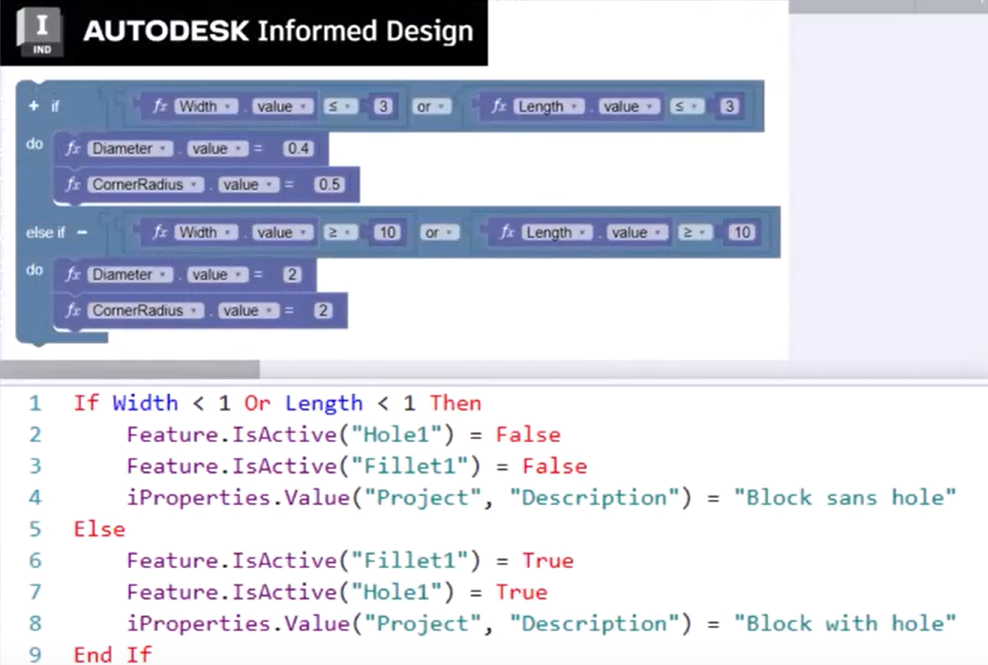Codeblocks - prepare model rules and input rules
Prepare iLogic to configure model rules for publishing to Informed Design and learn when to use Codeblocks to validate input rules.
Step-by-step guide
When an Inventor model contains iLogic rules, it is important to review them with a focus on Informed Design best practices before publishing your product definition.
In this example, the original rule in Inventor is restructured into two separate rules:
- An input rule to handle model parameter changes.
- A model rule, which uses the parameter changes to update or manipulate the Inventor model.
This separation allows the input rules to be disabled in Inventor and run instead from Informed Design.
Input rule functionalities include logic to:
- Set the minimum, maximum, or increment of parameter values.
- Set multi-value parameter lists, based on a condition or input value.
- Drive input parameter values from other inputs, using formulas and equations.
Model rule functionalities include those that manipulate the Inventor model, such as:
- Suppressing states of features, components, or constraints.
- Adding or removing assembly components or constraints.
- Setting component parameters or iProperty values.
- Updating or saving the document.
Input rules can exist in both iLogic and Informed Design, so that the model can be configured in Inventor, as well as in Revit, using Informed Design. However, it is important to ensure that iLogic input rules and the Informed Design input rules are not in conflict.
When using the model in Informed Design from Revit, any iLogic rules in the Inventor model will be run after the Informed Design rules are run. This means that if there is a conflict, iLogic rules will take priority.
In summary, it is best to keep iLogic input rules separate from model rules. Input rules only involve input parameters in the base model for driving configurations. Model rules involve manipulating the Inventor model as a result of the parameter changes from input rules.

